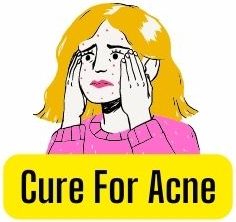Can tacrolimus ointment treat acne? Yes. But this medication is not without risks. You should know the risks associated with using it, especially if you are exposed to sunlight.
You should avoid excessive exposure to sunlight while you are using this medication or wear loose-fitting clothing when outside. If you cannot avoid the sun, ask your doctor about other ways to protect your skin from its harmful rays.
Treatment of psoriasis with tacrolimus ointment
Tacrolimus is a prescription medication that helps treat psoriasis. It comes in two strengths – 0.03% and 0.1%. Both of these strengths are suitable for adults and teenagers. The 0.3% strength is used to treat children aged two to sixteen years, while the 0.03% strength is used for children and adults of all ages.
If you’re considering taking tacrolimus, you’ll find an extensive community on the internet. Members of this free community share inspirational stories and lifestyle tips, and membership is free.
Tacrolimus ointment has been shown to be effective in treating both intertriginous and facial psoriasis. In a study published in the J Am Acad Dermatol, it was found that 6% of the ointment improved the severity of psoriasis and led to complete clearing by day 57.
Topical therapies are known to be more effective on intertriginous and facial skin, but this may not be true for tacrolimus ointment.
Topical corticosteroids or emollients may be effective in treating limited plaque psoriasis. Other alternative treatments include vitamin D analogs, tar, or retinoids. Alternatively, tacrolimus ointment or pimecrolimus may be used for intertriginous or facial areas.
If these treatments aren’t enough to control the disease, localized phototherapy may be used for a more permanent solution.
Patients were randomized to either 6% salicylic acid or 0.1% tacrolimus ointment. The patients were evaluated at baseline and at weeks one, two, four, and eight. The severity of the lesions was evaluated at week one and four, and the subjects were asked to measure the thickness of the target lesion.
For each treatment group, the patients received either 6% salicylic acid or tacrolimus ointment, depending on the severity of their disease.
Topical calcineurin inhibitors are another option for treating psoriasis. Although the mechanism of action is still unknown, the main effect of this medicine is to inhibit keratinocyte proliferation.
This drug is effective in treating both types of psoriasis, though there are risks associated with the use of tacrolimus. Topical treatment has negligible systemic absorption.
Tacrolimus has been used for several inflammatory skin disorders, including atopic dermatitis. The drug inhibits calcineurin, a protein that is essential for T-cell activity.
It also inhibits the activity of several genes in the nucleus that are responsible for the production of cytotoxic T-cells.
This anti-inflammatory drug is now widely used for post-solid organ transplant rejection prophylasis. Its fewer side effects make it suitable for skin transplantation.
Nonsteroidal topical treatments are used for the treatment of genital psoriasis. These treatments may increase the risk of lymphoma and are more expensive than topical corticosteroids.
Second-line treatment for genital psoriasis lesions includes topical calcineurin inhibitors, coal tar preparations, and vitamin D analogs.
Treatment of acne with tacrolimus ointment
This prescription-only medication is used to treat acne and other inflammatory skin conditions. It is available in two strengths, 0.03% and 0.1%. It is approved to treat acne, atopic dermatitis, and other inflammatory and immunologic skin disorders.
It is also approved to treat vitiligo. Patients should speak to their healthcare provider about any other precautions they should take before starting tacrolimus treatment, including avoiding ultraviolet-B treatments and sun exposure.
Tacrolimus ointment is an effective treatment for acne that also reduces the severity of inflammatory skin reactions. The ointment is used to treat moderate-to-severe eczema and is available in two strengths. It is not intended for children and should not be applied to infected areas.
The ointment should be applied as prescribed to ensure proper absorption. Do not skip a dose as it can have other negative effects.
You may have to apply the ointment on the affected area of your skin twice daily. Do not apply it to your lips, inside of your nose, or near your eyes. Ensure your skin is completely dry before applying the ointment.
After applying the medication, you must wash your hands thoroughly to prevent the buildup of bacteria. Do not forget to apply a moisturizer after using the medication.
Treatment of acne with tacrolimus ad ointment should be avoided during pregnancy, as it passes through breast milk and may affect breast-fed babies.
In addition, Tacrolimus should not be used in children under two years of age, as it is not proven safe for this age group. As with any medication, consult your doctor before using tacrolimus ointment for acne.
Tacrolimus ointment should not be used on the eyes, inside the mouth, or on open wounds. You should also avoid applying the medication on your face if you are allergic to the medication’s ingredients.
If you experience any adverse side effects, discontinue use of the medication and seek medical advice immediately. You may have to repeat the treatment if the symptoms return.
People with psoriasis should consult a dermatologist or doctor. Topical tacrolimus ointment, or Protopic ointment, is a prescription medication that inhibits the production of certain immune cells.
Although the ointment is safe, it increases the risk of systemic absorption. However, it is not advisable for people who cannot obtain a prescription for the drug.
The most common side effects of tacrolimus ointment include the risk of skin cancer, alopecia, and an increased risk of inflammatory conditions.
It is recommended for adults and children over two years of age and for patients with moderate to severe eczema. However, there is a risk of skin cancer and lymphoma if used for a prolonged period.
Risk of skin cancer from tacrolimus ointment
Researchers recently published a report comparing the long-term safety of tacrolimus ointment and its competitors in the treatment of atopic dermatitis. The researchers found that the topical treatment did not significantly increase the risk of skin cancer in children.
The findings of the study, dubbed the APPLES study, will be useful in deciding whether to recommend tacrolimus for atopic dermatitis.
Despite these findings, the safety of tacrolimus ointment is still under question. While the drug is effective for treating psoriasis, there have been several reports of skin cancer associated with it.
Since 1999, a number of cases of cutaneous T-cell lymphoma have been associated with tacrolimus. While these reports are largely based on case reports, the FDA is continuing to review these results and warn patients against using this treatment.
There are a number of potential risks associated with tacrolimus ointment. It is also associated with an increased risk of cutaneous infections. This is likely related to the immunosuppressive effect of the drug.
Nonetheless, the drug may be well-tolerated if used as prescribed for eczema. However, it is important to remember that the product is available in two strengths: a lower strength for children and a higher strength for adults.
A patient taking tacrolimus ointment should be careful when out in the sun. If it is accidentally swallowed, it may cause serious sickness. If this happens, call a poison control center to get more information.
Patients should avoid using a tanning bed while on tacrolimus ointment. It is also important to follow the instructions on the tazarotene label to ensure the safety of their medication.





